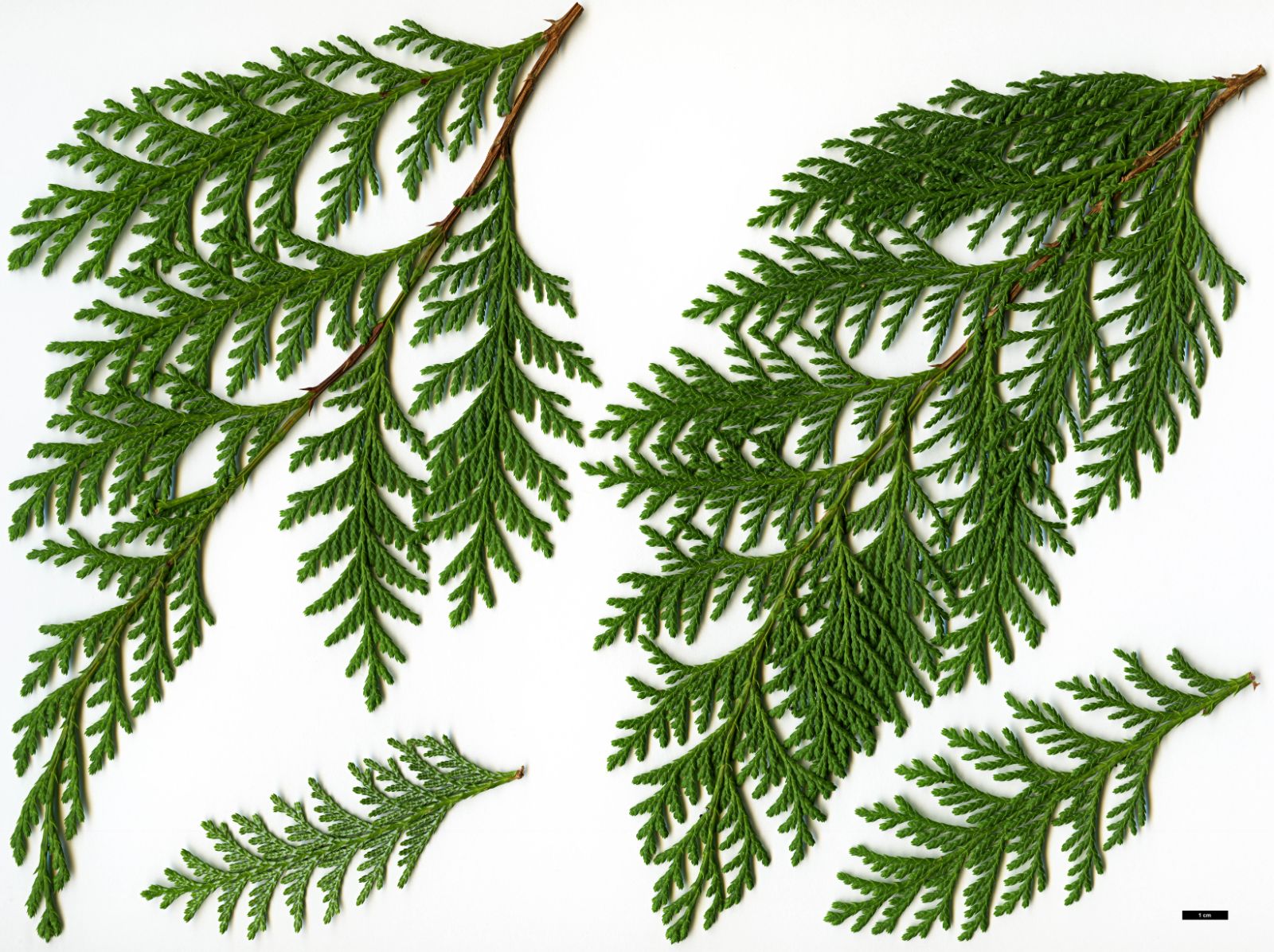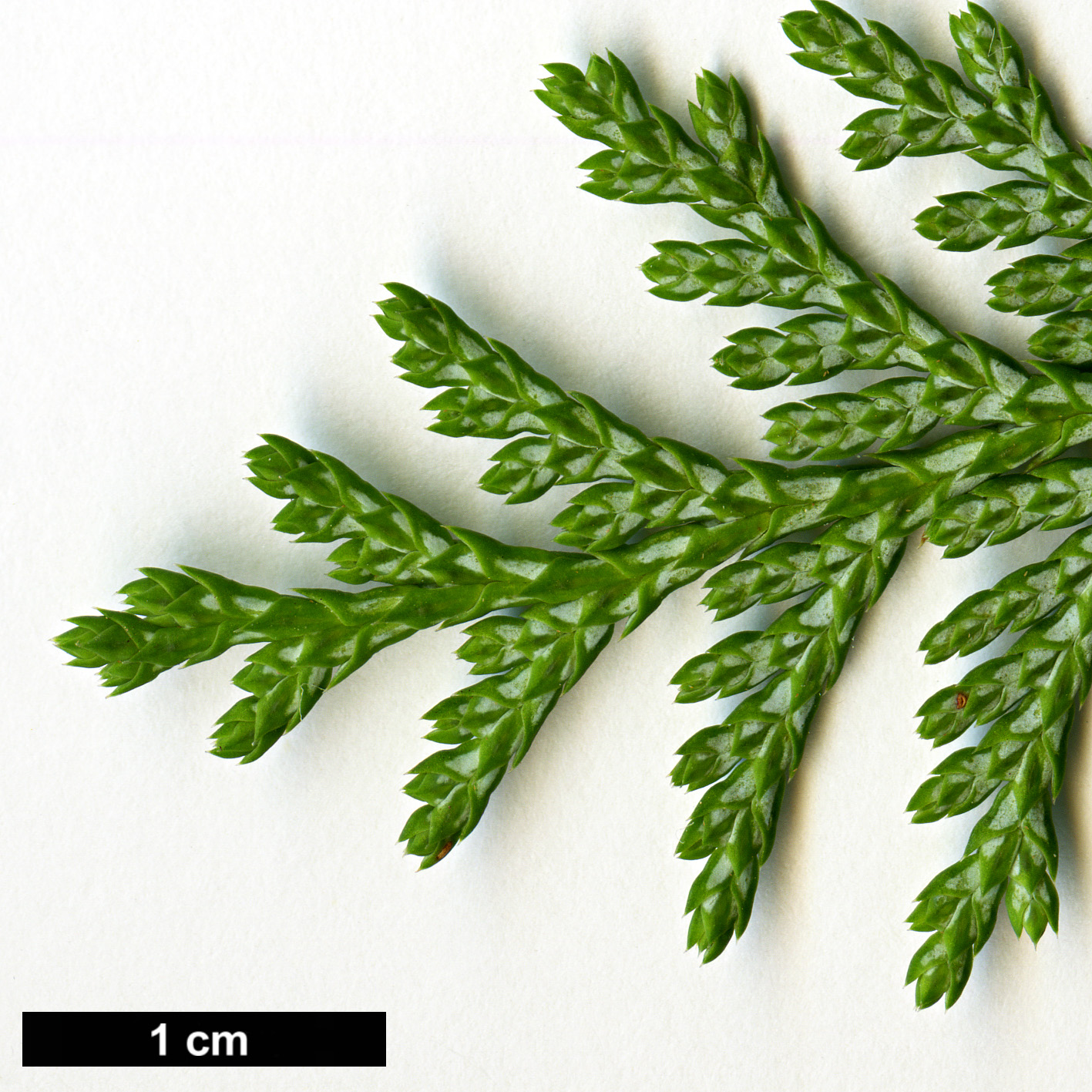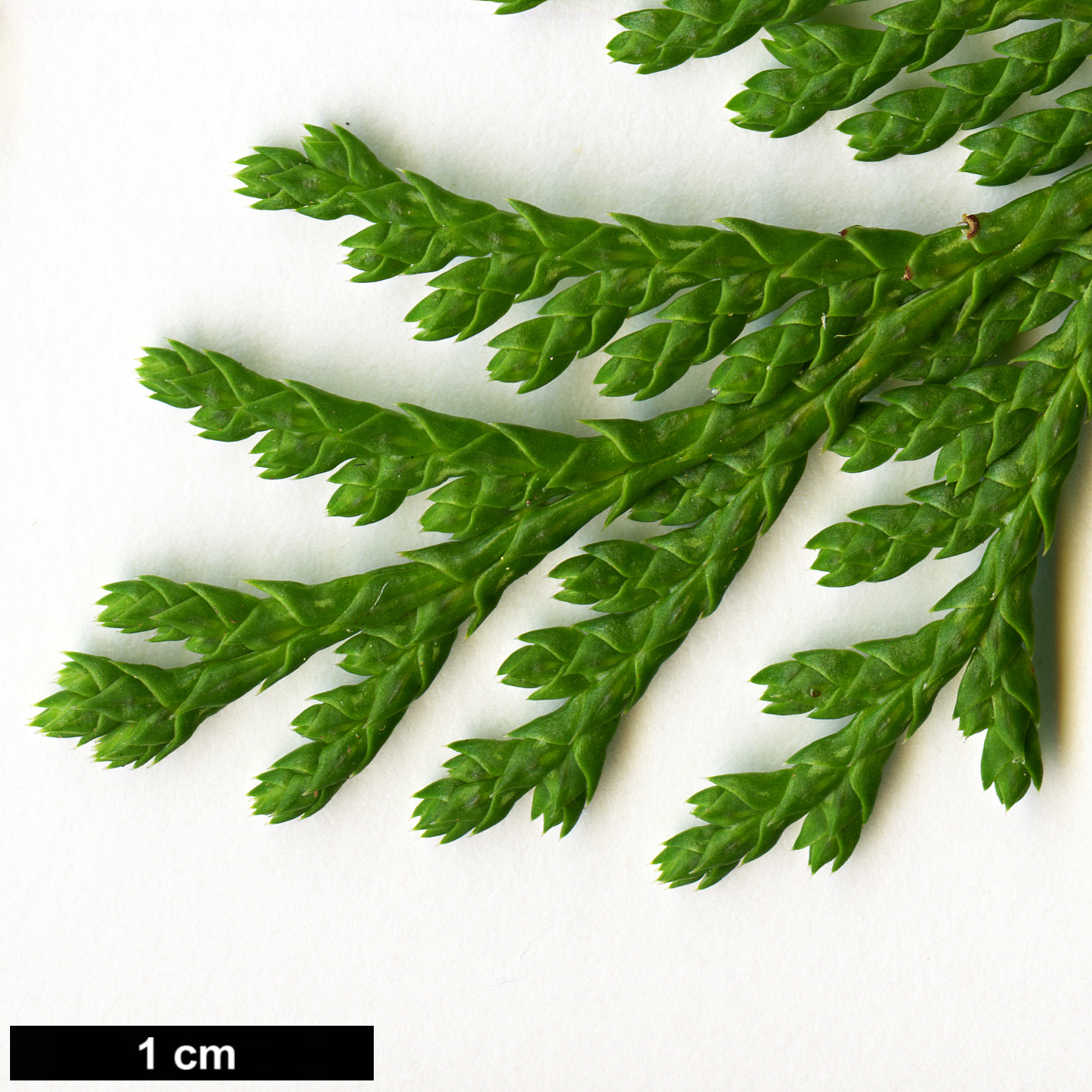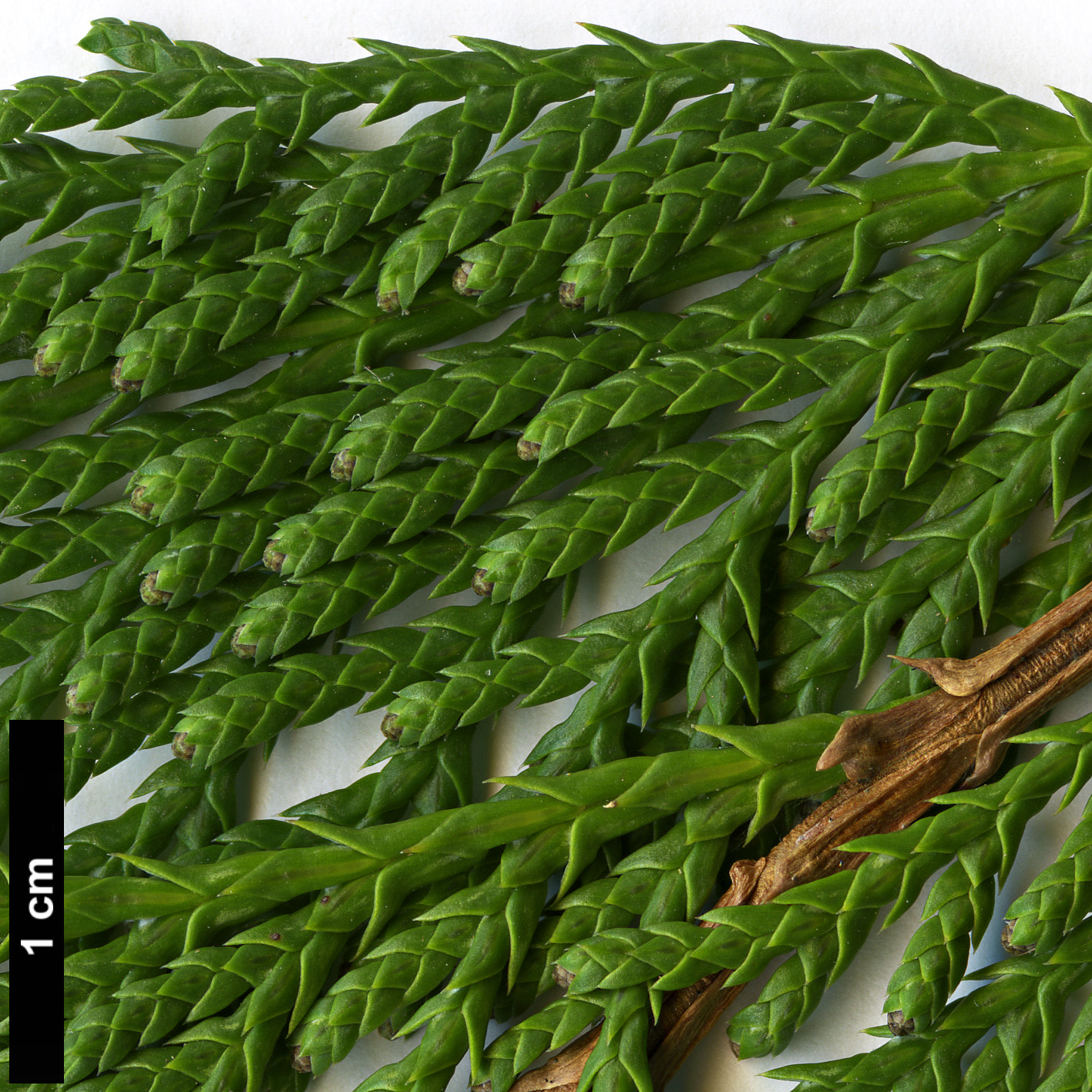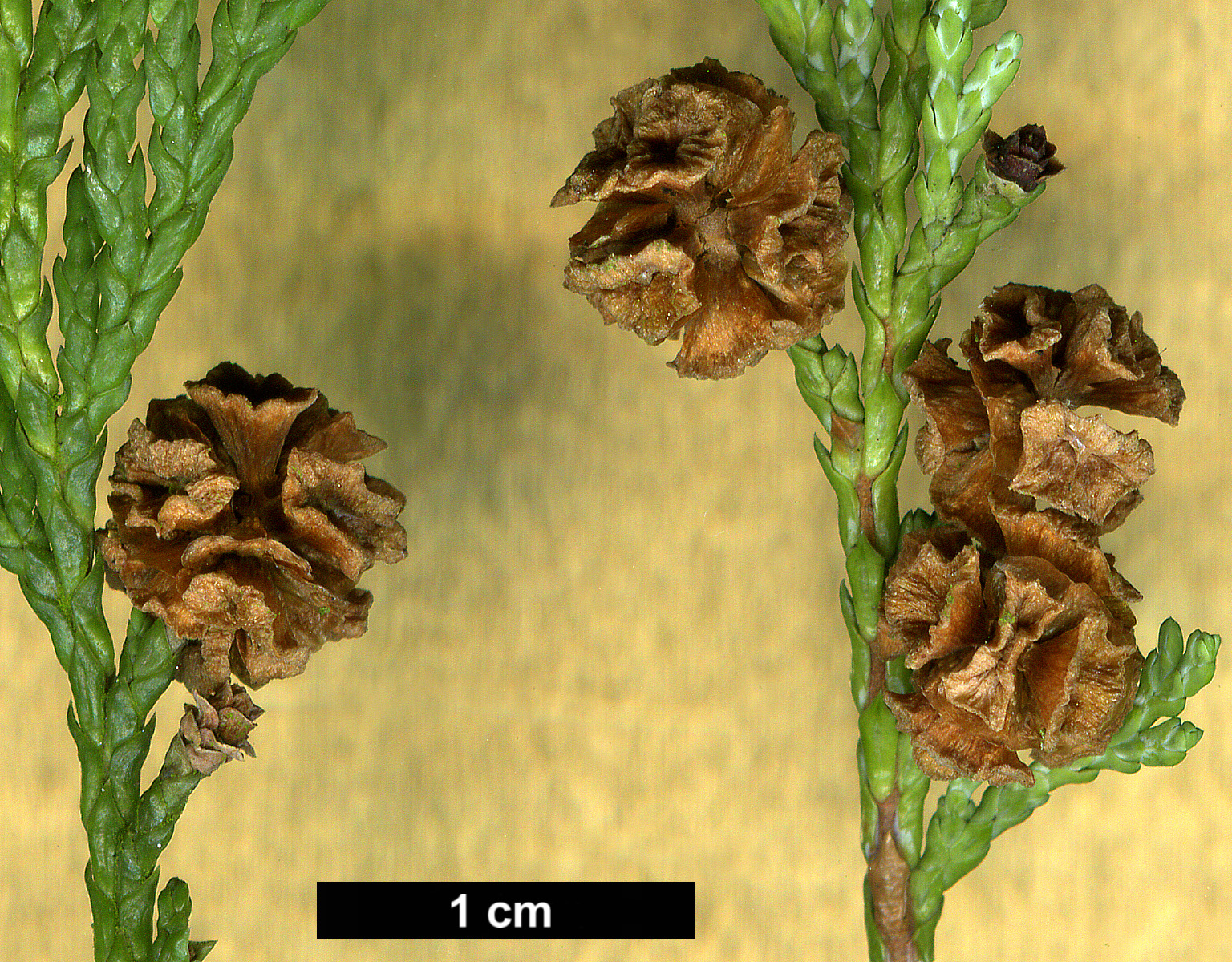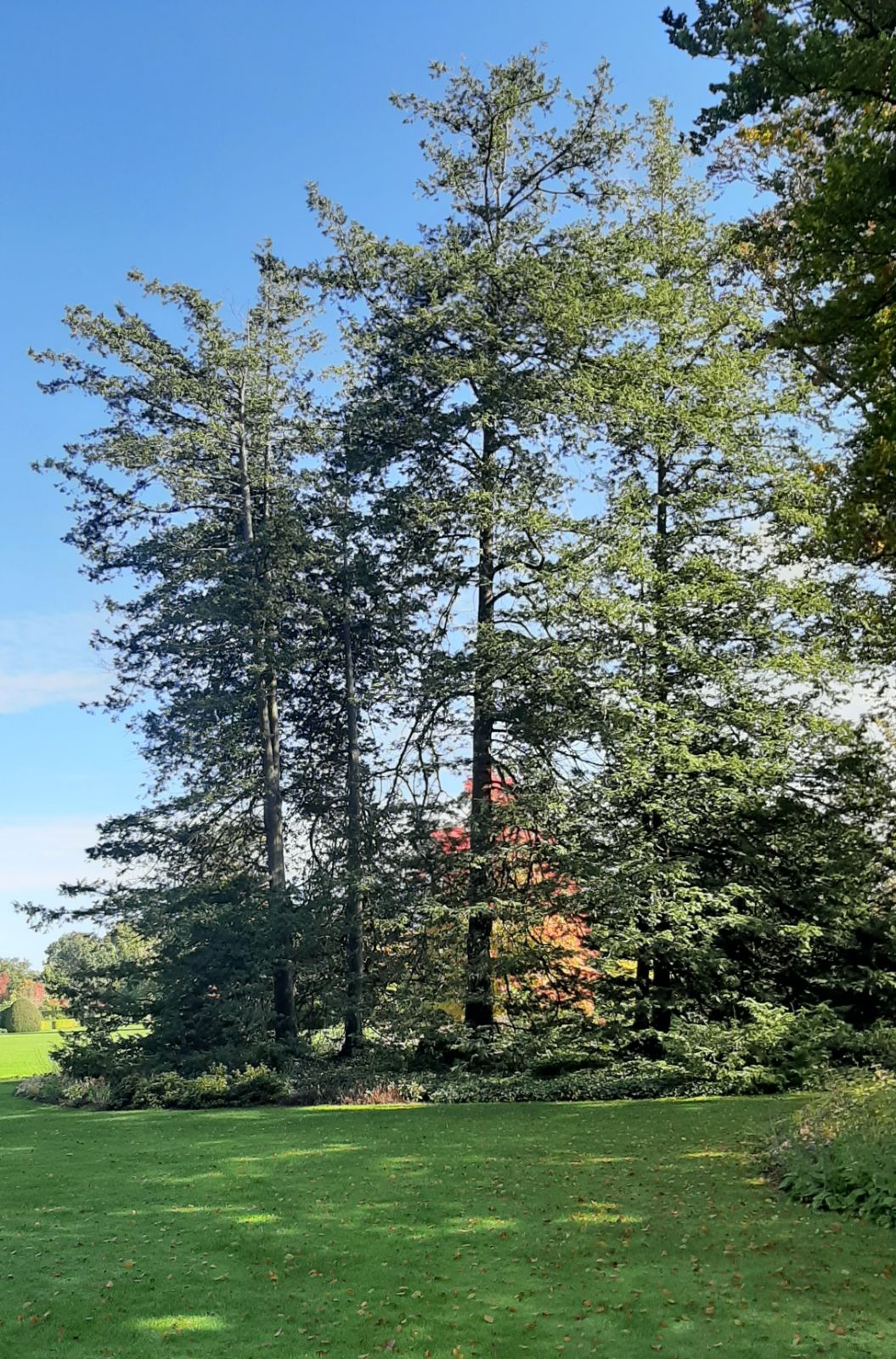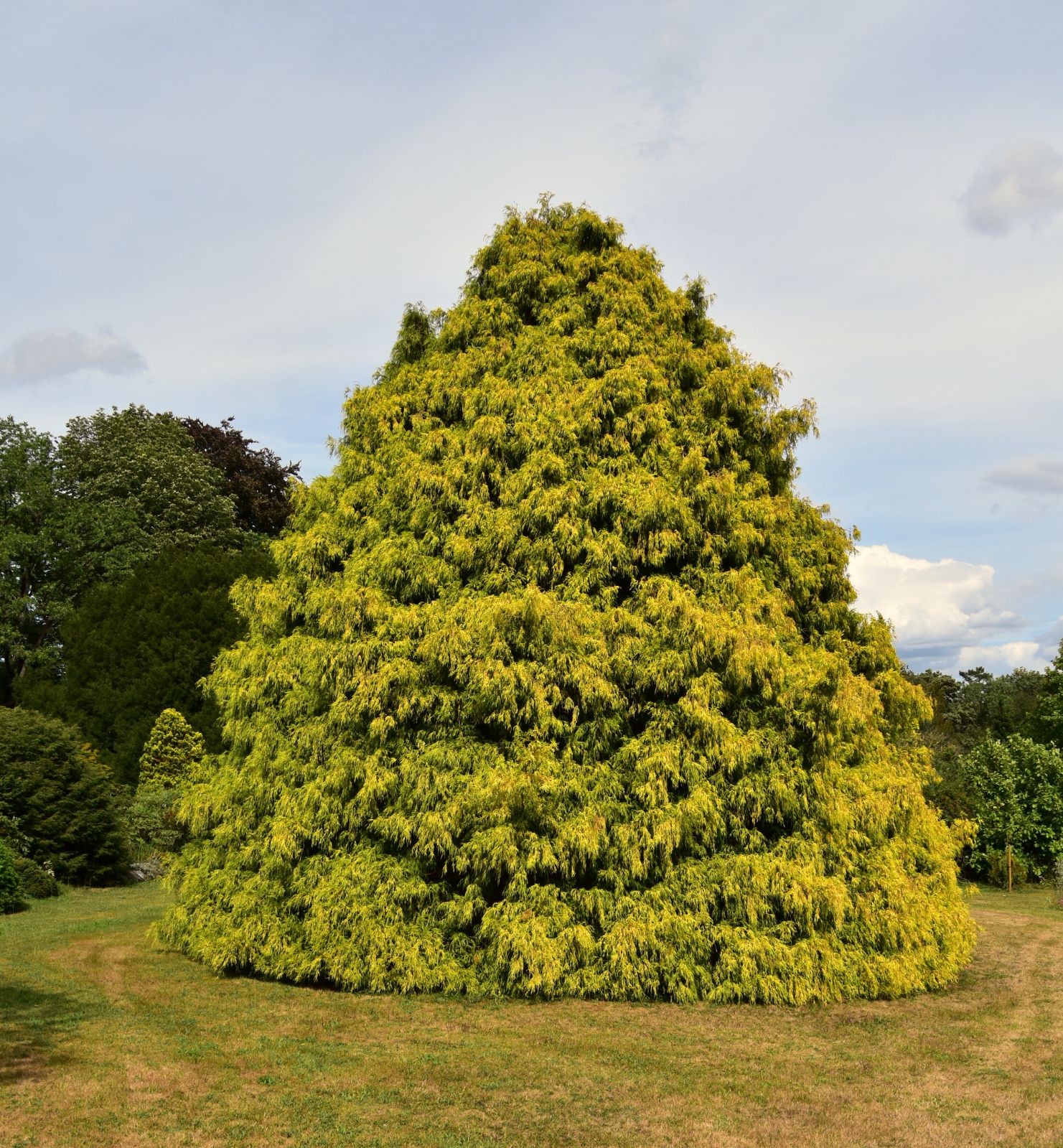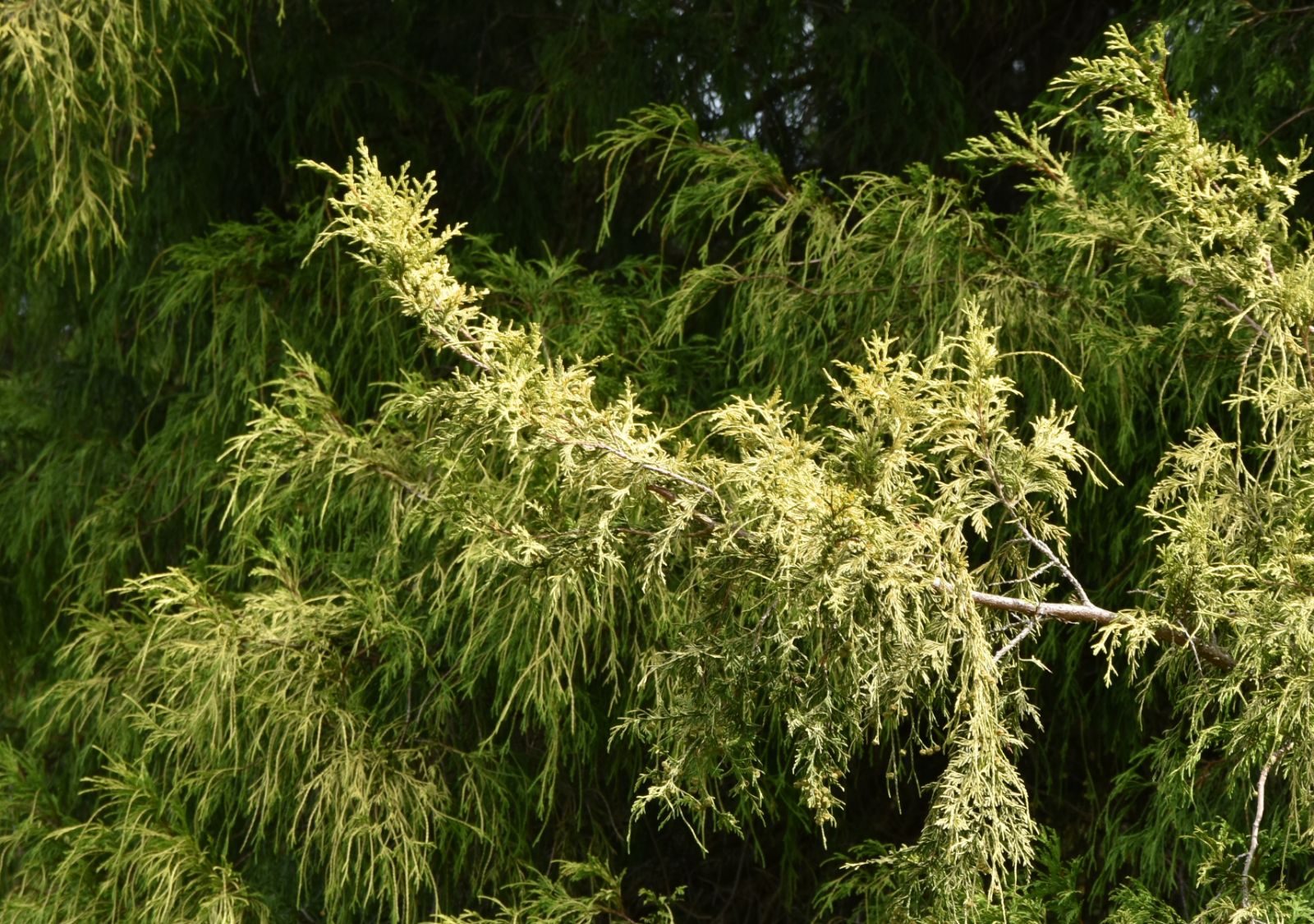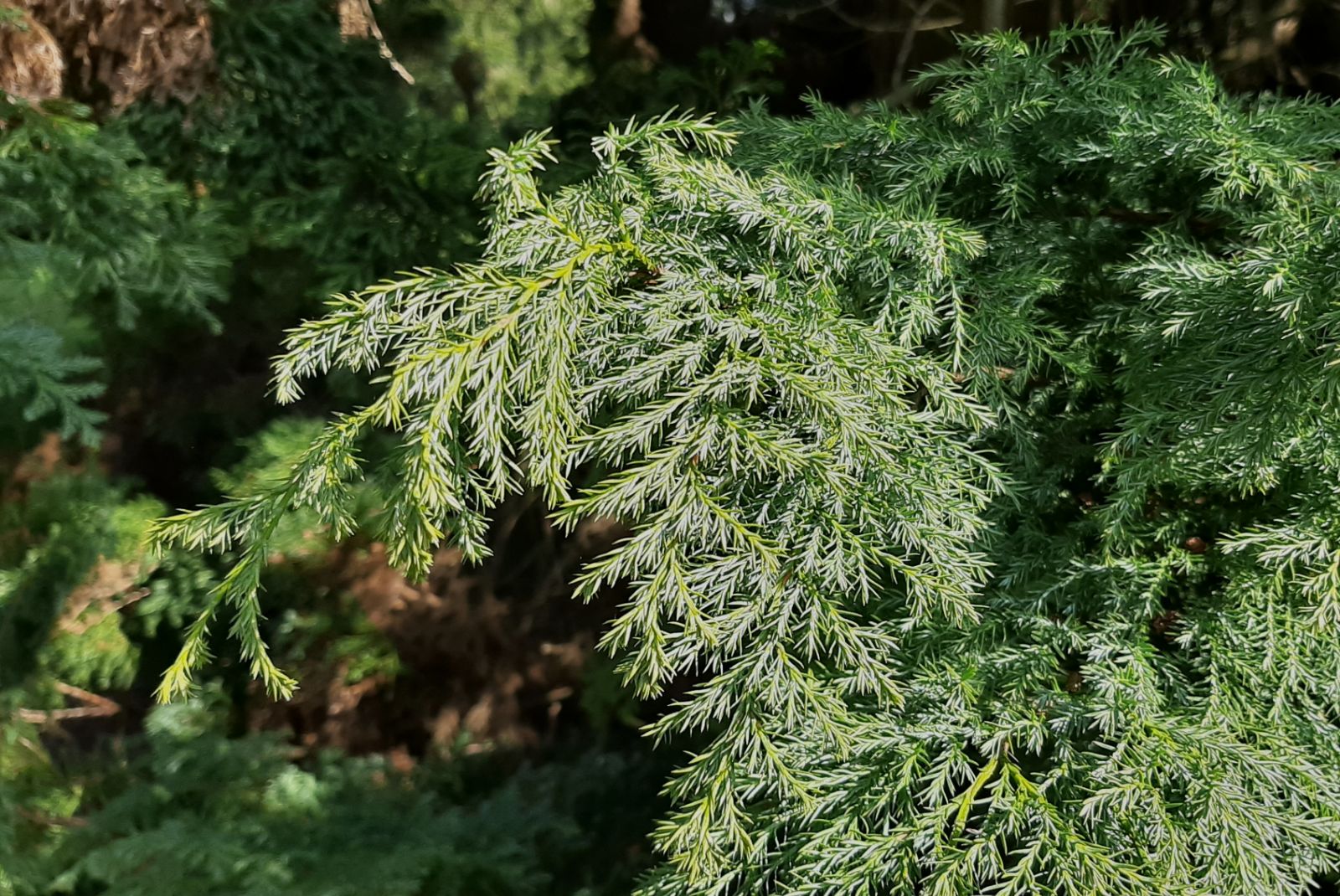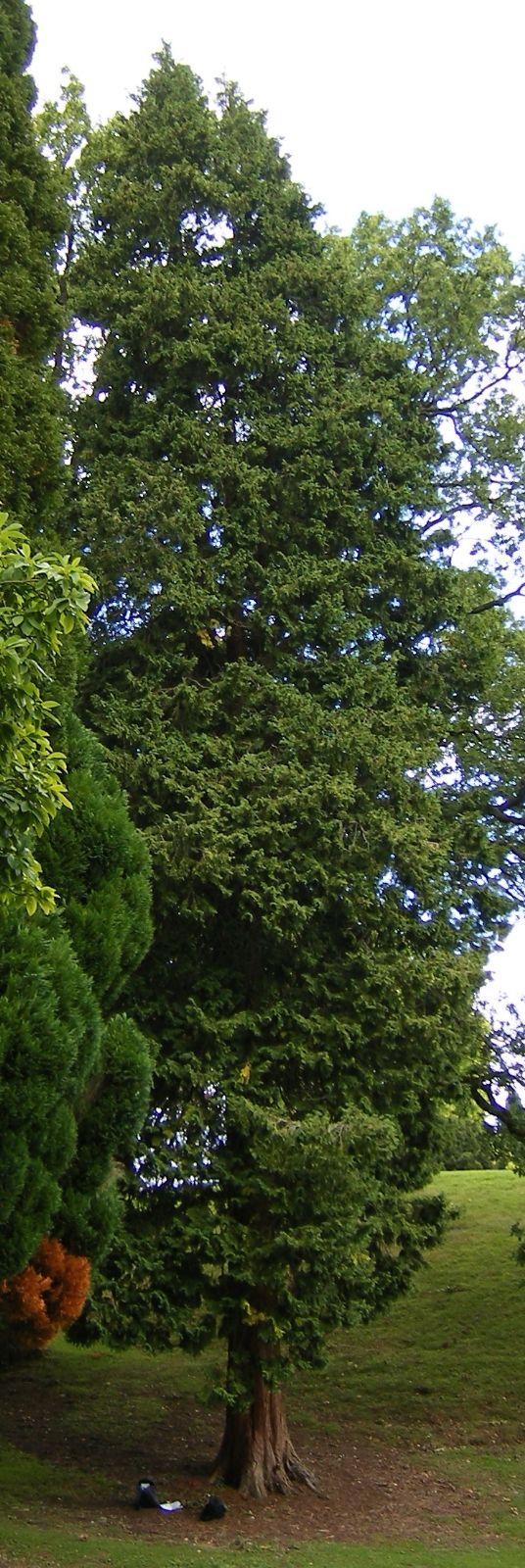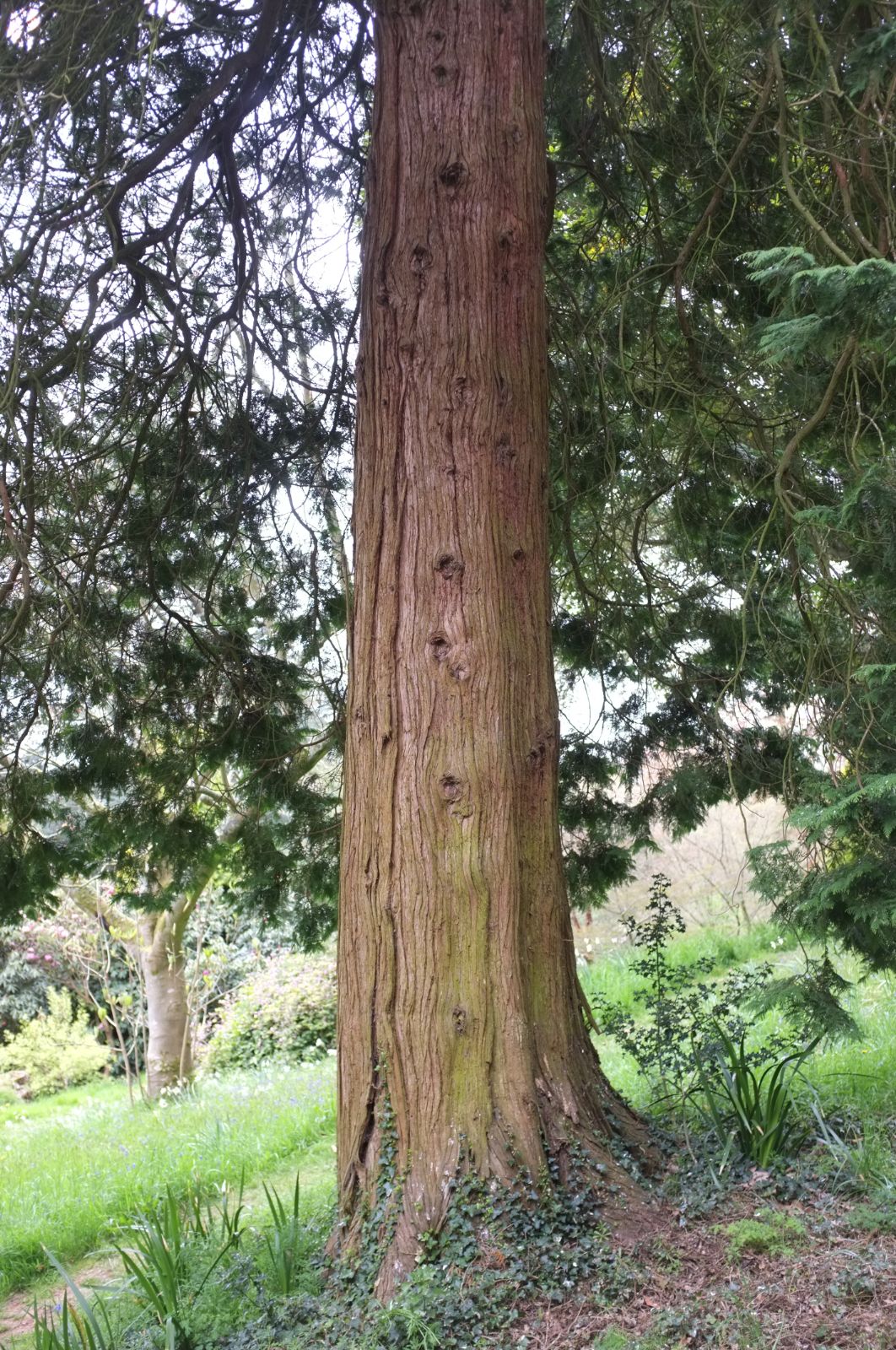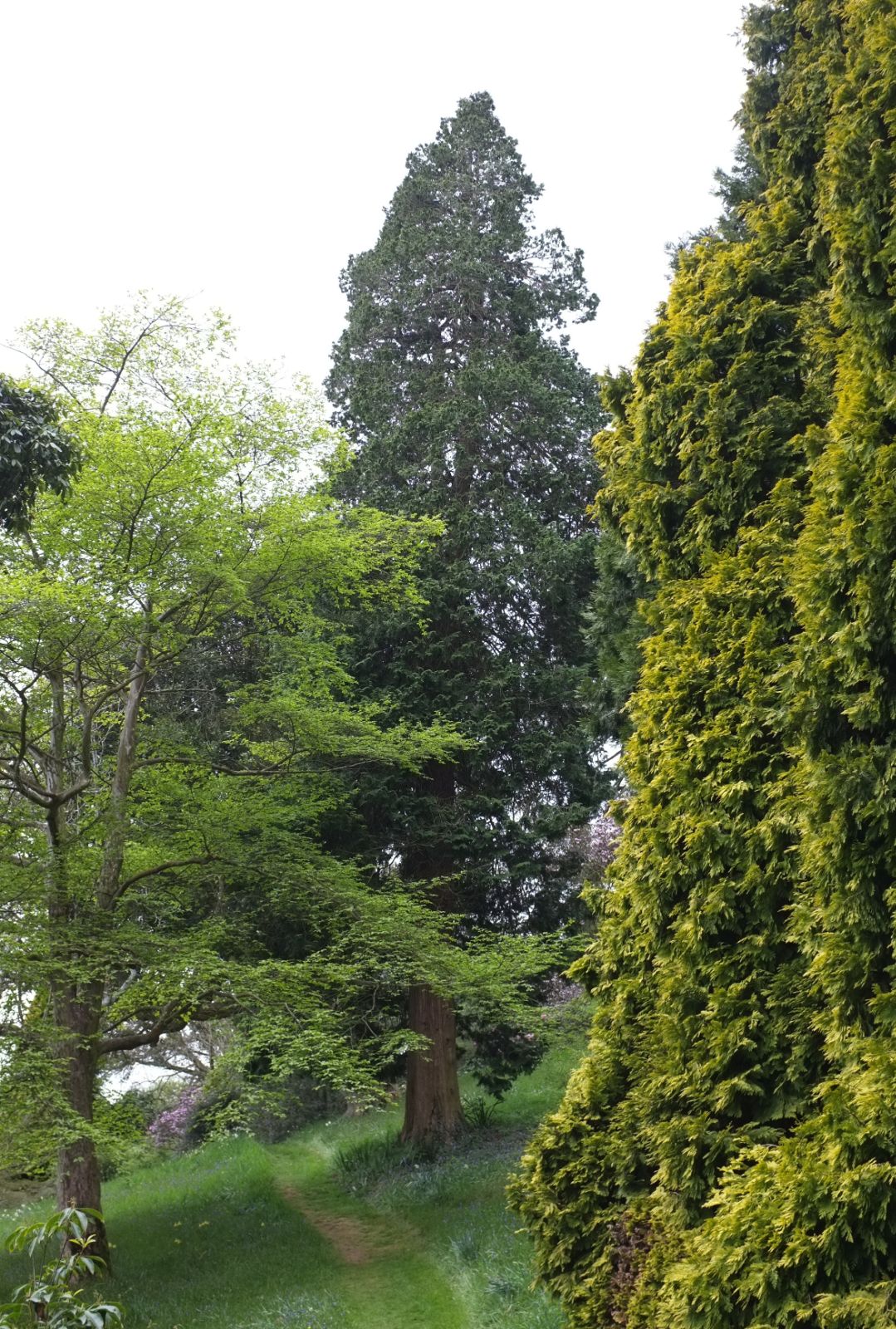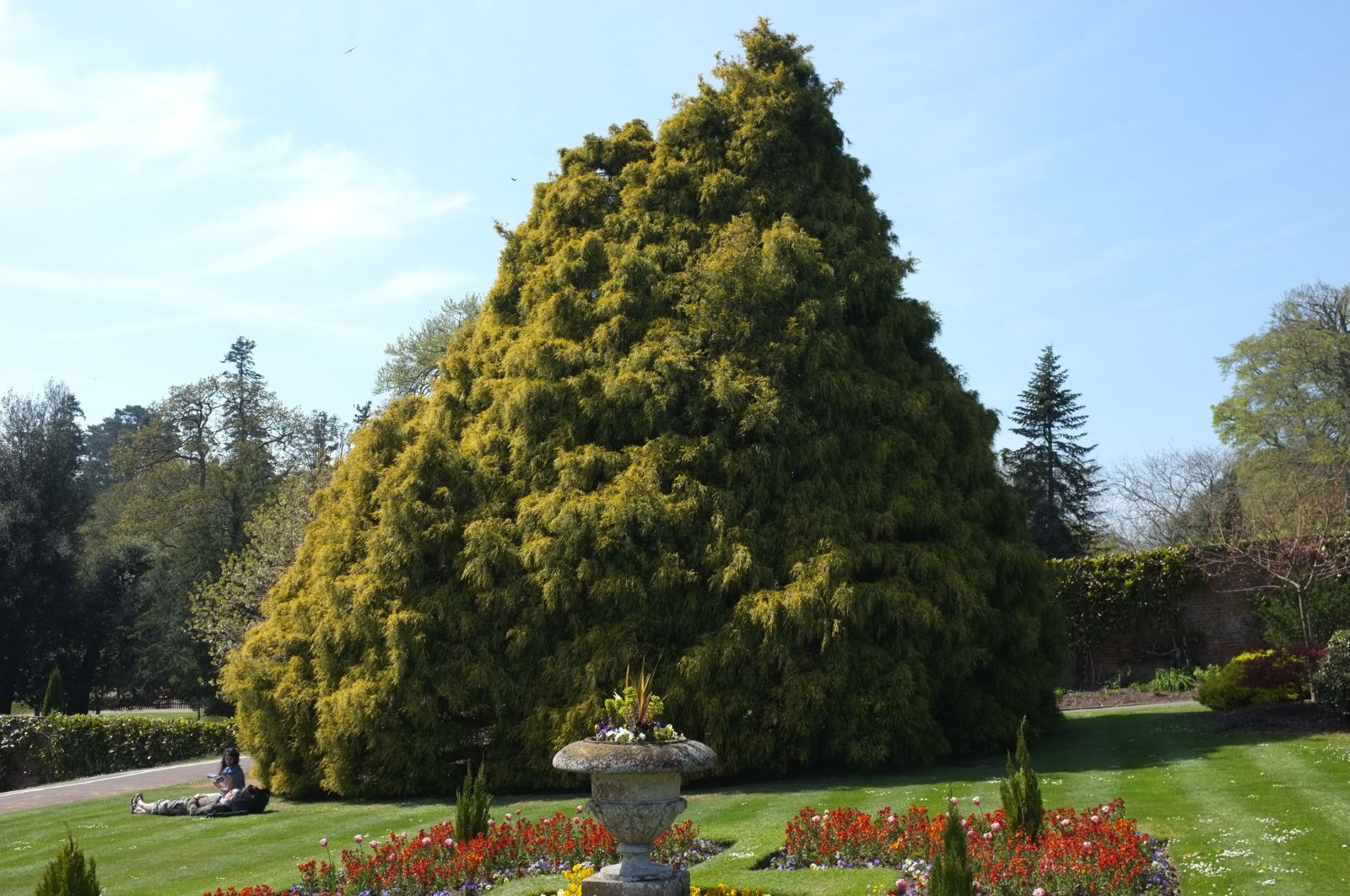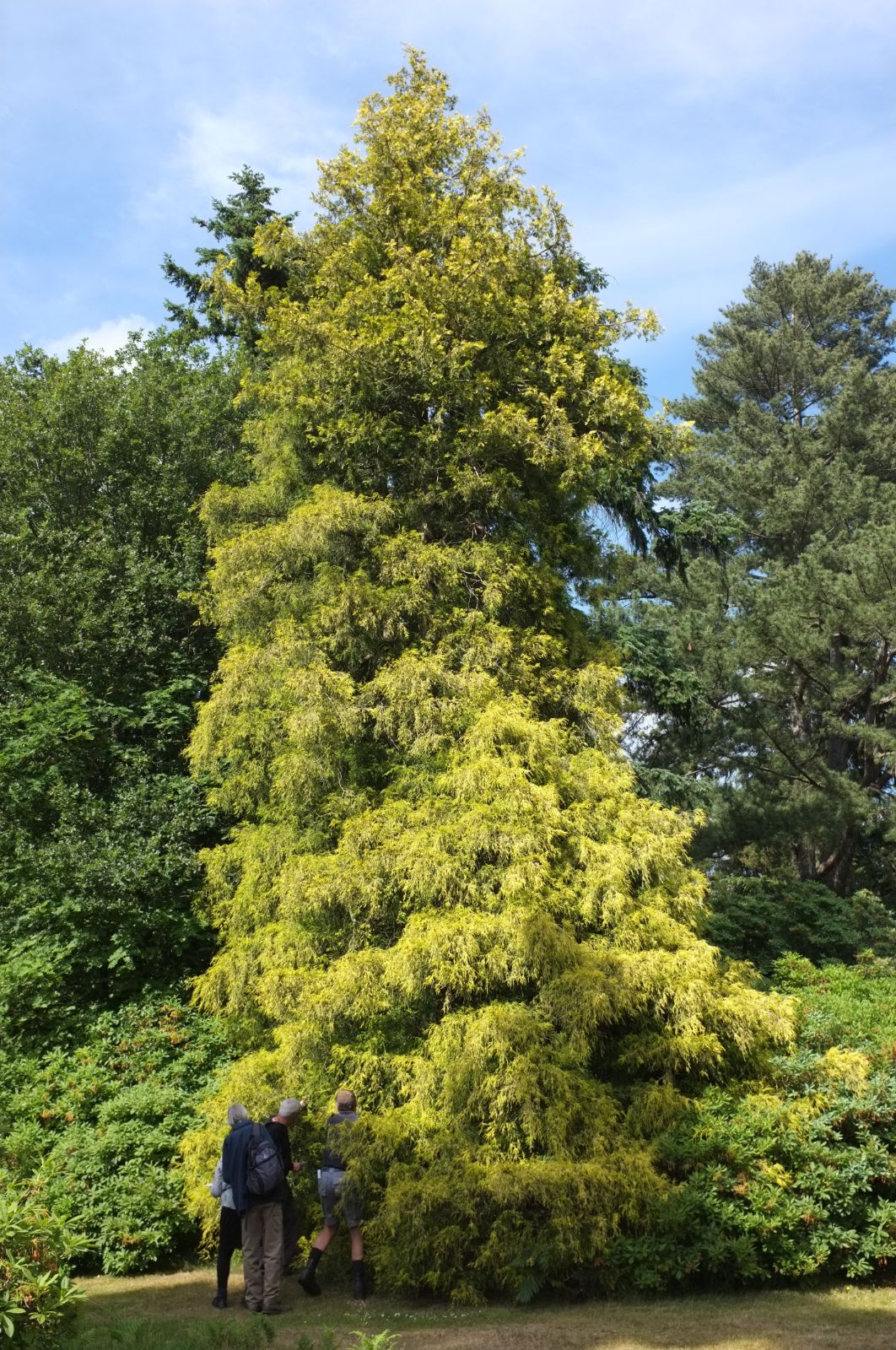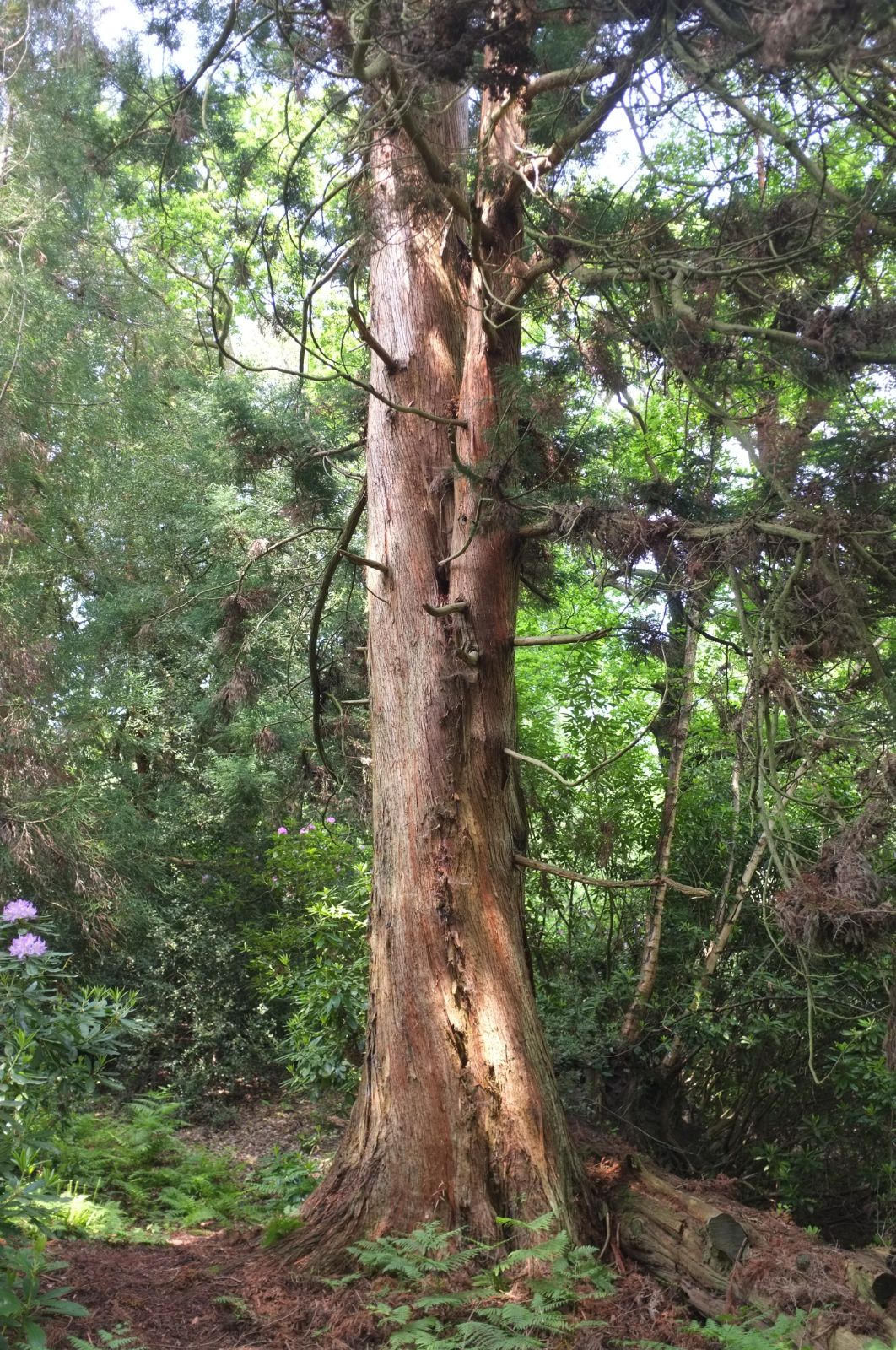Chamaecyparis pisifera
Credits
Article from Bean's Trees and Shrubs Hardy in the British Isles
Recommended citation
'Chamaecyparis pisifera' from the website Trees and Shrubs Online (treesandshrubsonline.
Genus
Common Names
- Sawara Cypress
Synonyms
- Retinispora pisifera Sieb. & Zucc.
- Cupressus pisifera (Sieb. & Zucc.) K. Koch
A tree 70 to 100, occasionally 120 to 150 ft high, with a trunk 3 to 5 ft in diameter. Branches arranged in two opposite horizontally spreading rows; branchlets flat, the ultimate divisions about 1⁄16 in. wide. Leaves of about equal length, the lateral ones somewhat the larger (1⁄12 in. long), all with sharp, slender, free points; dark green above, green at the tips beneath, but with a broad patch of glaucous bloom at the base of each. Cones brown, about the size of a pea; scales ten or twelve, hollowed towards the centre, where is a minute projection.
Native of Japan; introduced at about the same time (1861) by J. G. Veitch and by Fortune. As a tree for gardens the typical C. pisifera is inferior to C. obtusa, from which it is readily distinguished by its sharply pointed leaves. It is more likely to be confused with some forms of C. lawsoniana, but the leaves of the American species are rarely so finely pointed, and those of the lateral ranks, as in C. obtusa, are conspicuously longer than the upper and lower ones. In habit C. pisifera is apt to be thin, especially in poor soils, but this may be improved by an occasional clipping over in spring, more especially when in a small state. An occasional application of manure water is also beneficial.
C. pisifera, in its typical state, is rather rare in gardens, but the following specimens have been recorded: Stourhead, Wilts., 63 × 63⁄4 ft (1965); Killerton, Devon, 73 × 7 ft (1964); Bicton, Devon, 76 × 5 ft (1967); Dropmore, Bucks., 70 ft on two stems, the larger 61⁄4 ft in girth (1961); Longleat, Wilts., 71 × 61⁄4 ft (1959); R.H.S. Garden, Wisley, 67 × 43⁄4 ft (1964); National Pinetum, Bedgebury, Kent, 63 × 61⁄4 ft (1966); Cowdray Park, Sussex, 77 × 71⁄4 ft (1967).
The numerous garden forms of C. pisifera, much commoner in cultivation than the type, may conveniently be classified into four groups:
1. In this group the cultivars bear normal foliage but differ from the type in colour of leaf or in habit. The best known are ‘Aurea’, with golden-yellow young sprays; introduced from Japan around 1860; and ‘Nana’, a neat, dome-shaped bush of small growth.
2. Filifera Group. In these forms the foliage is more or less of the adult kind but the lateral branching is much reduced, so that the main branchlets become elongated, terete, and cord-like. The typical form – ‘Filifera’ – makes a low and wide tree, often a broadly pyramidal shrub only, its whole outer surface furnished with the slender, pendulous branches. In time it will grow to a considerable size; at Melbury, Dorset, it is 52 ft high. In ‘Filifera Aurea’ the young growths are golden; it is of slow growth, usually seen to 8 or 12 ft high at the most, but has attained 21 ft at Headfort in Ireland. ‘Filifera Nana’, with green leaves, is quite dwarf in its true form.
3. Plumosa Group. Persistently juvenile states of C. pisifera with awl-shaped leaves arranged in opposite pairs and standing out from the axis at an angle of about 45°. The typical green-leaved form ‘Plumosa’ (“Retinospora plumosa”) makes a small bushy tree but is not so common in cultivation as ‘Plumosa Aurea’, with yellow young growths, introduced by Fortune in 1861. A specimen of this at Bicton, Devon, now dead, measured 78 × 5 ft (1957). Others of 65 ft or over are at: Melbury, Dorset; Golden Grove, Carmarthen; Benenden Grange, Kent; The Hendre, Montg.; Lydhurst, Sussex.
4. Squarrosa Group. These forms retain (usually permanently) an even more juvenile type of foliage and branching than the Plumosa group, and one characteristic of seedlings of the species. Normally, seedlings retain it for three or four months, when the plumosa type of foliage develops; the following year and the year after the typical adult form begins to appear. The typical form of this group, ‘Squarrosa’ (Retinispora squarrosa Sieb. & Zucc.), is a very dense-habited bush of uniform silvery, glaucous hue, the branching very bushy, irregular, often lumpy. Leaves about 1⁄4 in. long, narrow, flat, and pointed; glaucous on both sides, and standing out at angles of 45° to 90°. They are arranged in pairs or in threes, sometimes spirally, more often descussately. A very pleasing and striking small tree or bush. ‘Squarrosa Sulphurea’ has a distinctly yellowish hue, very marked when grown alongside the ordinary form. Both are apt to get thin with age, and are often improved by an occasional clipping. ‘Squarrosa’ reaches as great a height as the normal wild form. The tallest at Bicton, Devon, now dead, measured 81 × 71⁄2 ft (1964). There is a good specimen in the R.H.S. Garden, Wisley, measuring 63 × 5 ft (1964).
Another member of this group is ‘Boulevard’ (C. p. squarrosa cyanoviridis), a very striking introduction from the U.S.A., with leaves grey-green above and vividly blue-white beneath; ultimate height unknown.
From the Supplement (Vol. V)
specimens: R.H.S. Garden, Wisley, Surrey, 72 × 61⁄4 ft (1982); National Pinetum, Bedgebury, Kent, pl. 1925, 44 × 31⁄2 ft (1970) (the tree measured in 1966 is dying); Benenden House, Kent, 70 × 6 ft (1979); Cowdray Park, Sussex, three trees, the largest 94 × 81⁄2 ft (1982); Bicton, Devon, 82 × 53⁄4 ft and 72 × 61⁄2 ft (1977); Killerton, Devon, 60 × 81⁄2 ft (1983) and 85 × 73⁄4 ft (1980); Scorrier House, Cornwall, 59 × 63⁄4 ft (1979); Strone House, Argyll, 72 × 61⁄2 ft (1976); Powerscourt, Co. Wicklow, Eire, 62 × 6 ft (1980).
1. ‘Aurea’, mentioned on page 599 makes an attractive specimen of slow growth, attaining 40 ft eventually (rarely more).
2. Filifera Group. ‘Filifera Aurea’ may grow to 40 ft in height, though 15 to 20 ft is the usual maximum. A sport from this now available in Britain is ‘Sungold’, with bronze-yellow leaves which do not burn in strong sun (Dendroflora No. 6, p. 78 (1969)).
3. Plumosa Group. The normal green-leaved form has attained 77 × 81⁄4 ft at Cowdray Park, Sussex (1982) and 68 × 61⁄4 + 53⁄4 ft at The High Beeches, Handcross, Sussex (1982). The cultivar ‘Plumosa Aurea’ grows as tall as its green counterpart, some large examples being: Heckfield Place, Hants, 75 × 91⁄4 ft (1982); Golden Grove, Dyfed, pl. 1863, 70 × 93⁄4 ft (1982); Powerscourt, Co. Wicklow, Eire, 66 × 8 ft (1980).
Other cultivars in this group, not mentioned in the main work, are: ‘Plumosa Aurea Compacta’ making, at least as usually grown, a slow-growing bush of roundish to conical habit, with soft-yellow foliage, which is rather more juvenile than in most Plumosa cultivars; and ‘Plumosa Compressa’, a sport from ‘Squarrosa’, forming when young a very tight hummock, with mossy, grey-green foliage.
4. Squarrosa Group. The type form ‘Squarrosa’ was referred to as a small tree or bush. So indeed it remains for many years, but with age it can make a large tree, as the following examples show: Moss’s Wood, Leith Hill, Surrey, 74 × 83⁄4 ft (1975); Lower Combe Royal, Devon, pl. 1863, 66 × 91⁄4 ft (1977); Golden Grove, Dyfed, pl. 1863, 55 × 81⁄2 ft (1982); Bodnant, Gwyn., 85 × 73⁄4 ft (1981); Achnagarry, Inv., 60 × 91⁄2 ft with multiple bole (1982); Powerscourt, Co. Wicklow, Eire, 66 × 8 ft (1980).
In the short time since it was introduced from the USA, ‘Boulevard’ has become one of the most popular of the smaller conifers, but it can disappoint if not grown in a light, acid, moist soil. It should be trimmed if it shows signs of losing its compact habit.

